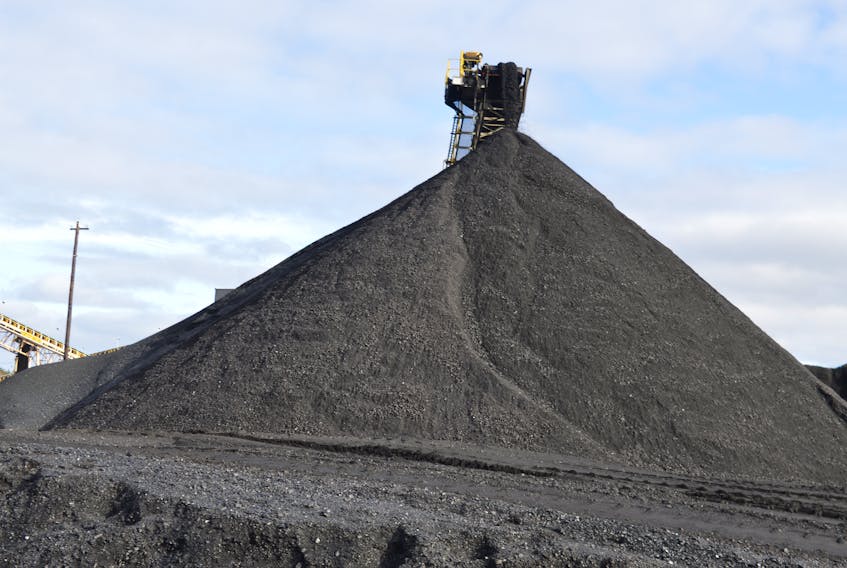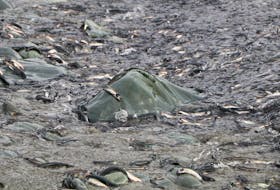It was undeniably good news when Lt.-Gov. Arthur J. LeBlanc, reading Premier Iain Rankin’s throne speech, said that the province was accelerating the phase-out of coal for energy use by 2030, 10 years earlier than planned, all in the service of making Nova Scotia Canada’s first carbon neutral province.
I know that I am not alone in this view: coal releases more carbon emissions per unit of energy than any other electricity source and is, therefore, responsible for almost one-third of global warming.
This week an opinion piece by Michael Bloomberg, the former New York mayor and now UN Secretary-General António Guterres' special envoy on climate ambition and solution, and Frans Timmermans, who is leading EU climate diplomacy, also pointed out that coal is responsible for 400,000 premature deaths a year in the EU alone, and five per cent to 10 per cent of all annual premature deaths in the United States — and that while coal is in a death spiral, the dirtiest of fossil fuels still produces close to 40 per cent of global electricity.
Coal, as a spokesperson for Nova Scotia Power Inc. said this week, must not be part of the world’s future. But can we still acknowledge all that it has meant to our past.
Coal brought my people here from the farmlands of Scotland and England’s industrial heartland. As coal seams were discovered and rail lines laid, communities coalesced. Around mines with enough production, and longevity, towns materialized. In time, a settlement pattern evident throughout Pictou and Cumberland counties, and, Cape Breton, emerged.
I can speak personally on this matter. My mother’s father went into the Princess mine in Sydney Mines at age 11 and, other than surfacing every now and then to fight in a war, spent the next 50 years in and around the pit.
When a fire swept through Windsor in 1897, Ned Demont — our family is riddled with different spellings of our surname -- and his wife May, headed for Sydney because my great-grandfather had heard they were hiring at the steel plant there where they used coke, a coal by-product, to fuel its furnaces and smelt iron ore.
So, thanks to coal I am here.
Yet there is nothing special about either of those two stories. Since the first mine was dug in this province to fuel the artillery forges at Fortress Louisbourg, coal has brought people to Nova Scotia.
Coal brought my people here from the farmlands of Scotland and England’s industrial heartland. As coal seams were discovered and rail lines laid, communities coalesced. Around mines with enough production, and longevity, towns materialized. In time, a settlement pattern evident throughout Pictou and Cumberland counties, and, Cape Breton, emerged.
Somewhere around the turn of the 20th century, my great-grandfather decided that it made no sense to stay in the bleak collieries of Lancashire in class-conscious England when the coal fields of Nova Scotia were booming.
In September of 1902, when John Briers disembarked from a ship in Sydney Mines, the rows of company houses were already starting to stretch along Pitt, Crescent, Main and Forest streets towards the workings of mines like the Princess where he first put pick to mine face.
But Sydney Mines would double in size during from 1901-1910.
As I wrote in my book Coal Black Heart: The story of coal and the lives it ruled, when his wife, Margaret and their four children arrived two years later “the first vestiges of civilization were just beginning to appear” there. Sydney Mines’ first hotel, but also some privately owned businesses and a post office, although it would be 1907 before the town got its first plank sidewalk.
During the same period, the population of Sydney doubled almost overnight as Poles, Lebanese, Syrians and Austrians arrived to work its burgeoning steel mills.
I could tell you about the children, so young they still believed in Santa Claus, sent to work in the eternal dark of the mines, and the ponies working in the pit who only emerged into the sunlight for a couple of weeks a year.
When the 1867 census was taken, Glace Bay — named after the jagged ice that filled the harbour during winter — was really just four grim collieries. Twenty years later, 2,459 people made their home there. A decade later, 7,000 people lived in the town where people named Demont and Butts would run the roads.
To hear my parents tell it they were lucky to grow up in the coal towns of Cape Breton. From everything I know about their families and friends, and the connectedness of life in those communities, they were.
Yet, during coal’s heyday so much of life seemed unimaginably hard in the colliery towns.
I could go on about the coal-company-owned stores, where the colliers and their families had to buy everything they wore and ate, as well as the other necessities of life.
I could tell you about the children, so young they still believed in Santa Claus, sent to work in the eternal dark of the mines, and the ponies working in the pit who only emerged into the sunlight for a couple of weeks a year.
I could write until my arm gave out about the poverty and disease in those places, and the brutal strikes during which mounted police road down strikers in the streets.
Instead, I will leave you with the 2,497 entries on the Nova Scotia Museum of History’s list of coal mining fatalities in this province and leave it at that.
A few years ago, while working on Coal Black Heart, I asked Ross McCurdy, the president of once-mighty Cape Breton Development Corp., who was then in charge of dismantling what was left of DEVCO’s mills, ovens, and plants, about the remnants of Cape Breton’s great age of coal.
My memory is that we talked about the company homes still around, and the way the old mine entrances were being covered over and turned into greenfield sights.
Then, at some point in the conversation, he told me that under the ground, Cape Breton’s geography was shot through with 3,200 kilometres of old mine workings.
The number — which I figured to be about the distance from Halifax to Saskatoon — is enough to give a person vertigo.
In my mind the image also gave off an eerie, Pompeii vibe. All of that history buried underground now that coal’s day, we can only hope, is finally done.









